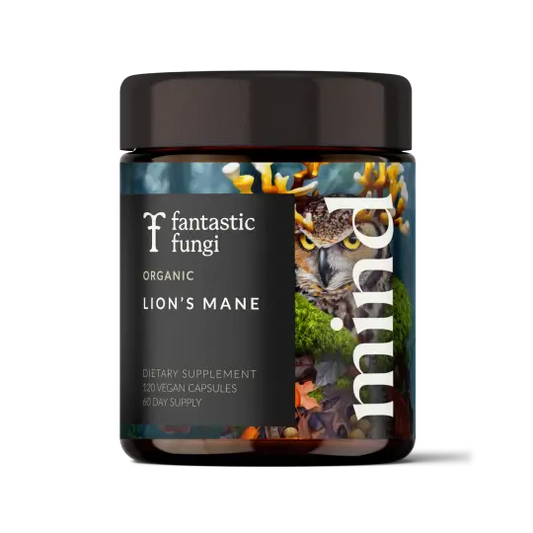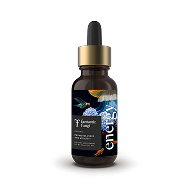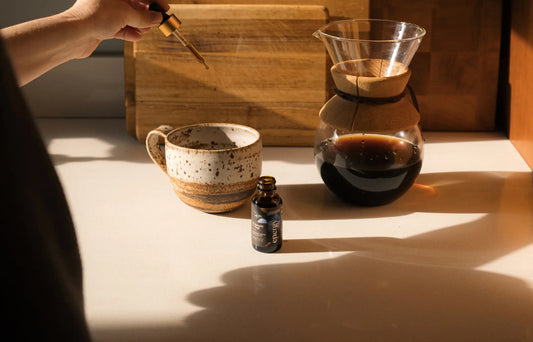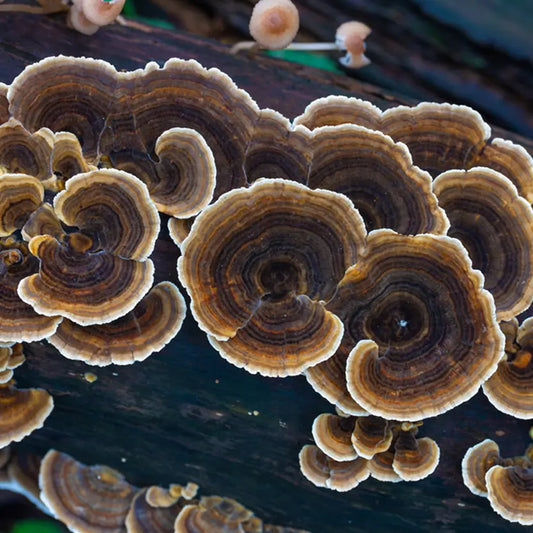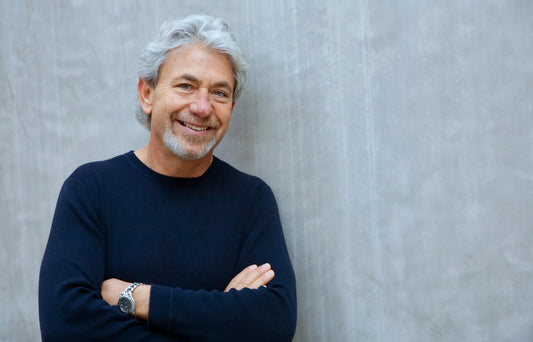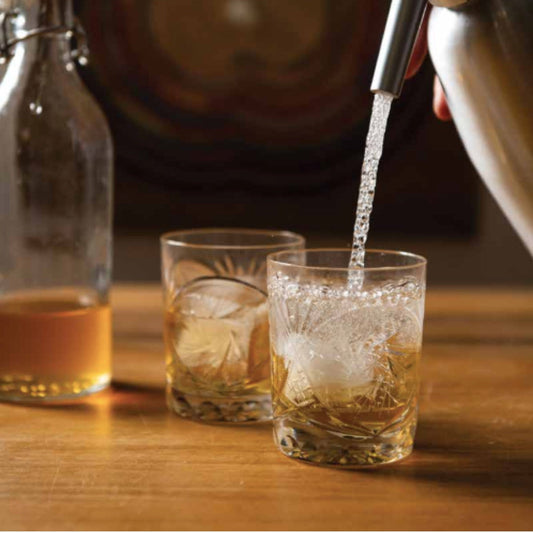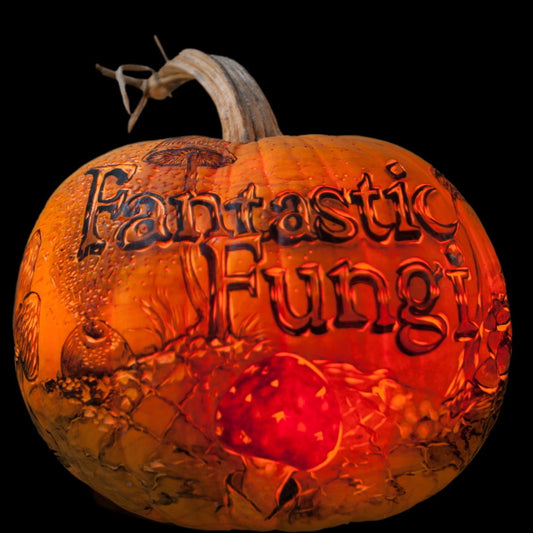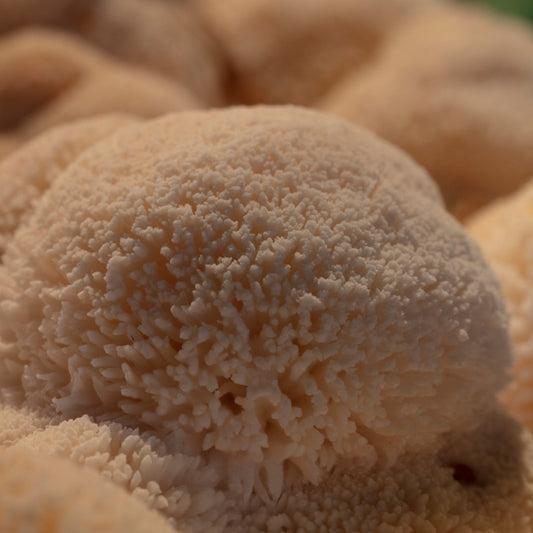
Here’s What to Know About Lion’s Mane Mushrooms
Have you ever wondered how certain mushrooms earned their unique names? The botanical names are carefully chosen by mycologists. (Those are the two-part Latin names that include both a genus and a species.) It’s the common names of mushrooms that often tell a story. That’s definitely the case with Lion’s Mane mushroom.
Hericium erinaceus goes by plenty of monikers including: mountain-priest mushroom, bearded tooth fungus, pom pom mushroom, hedgehog mushroom, monkey head mushroom, white beard, bear’s head, hog’s head fungus and brain mushroom. Most commonly it’s called Lion’s Mane, and you’ll understand the first time you see one up close. These mushrooms are large, fluffy and white – and they look like all those names.
Lion’s Mane offers far more than a unique appearance and quirky nicknames. This mushroom has been used for centuries in a variety of ways. Read on to learn why Lion’s Mane mushroom is right at home in the kitchen and in herbalism traditions around the globe.
What Does Lion’s Mane Look Like?
Lion’s Mane is a wonderful mushroom for new mycophiles to forage in the woods (with help from more experienced mushroom hunters, of course). In their mature state, Lion’s Mane fruiting bodies are large, fluffy-looking and round, with long and dangling spines. It is a soft mushroom (unlike, say, Reishi). As the mushroom ages past its peak, the icicle-like spines turn yellow then brown.
Tip: At the farmers market, grocery store or in the woods, choose Lion’s Mane mushrooms that are white. While you can trim away small yellow or brown patches, the freshest mushrooms will be mostly white.
Lion’s Mane 101
Botanical name: Hericium erinaceus (The species name literally means “hedgehog” in Latin!)
Native habitat: North America, Asia and Europe
Traditional and modern uses:
The unique appearance of Lion’s Mane hints at its most common uses in herbalism. Which organ do you think it most closely resembles? (Hint: Take a moment to think about it!) If you guessed the brain, you’re correct. Lion’s Mane is often used to support both the brain and nervous system.*
Lion’s Mane:
- Promotes mental clarity and focus*
- Supports nervous system health*
- Offers cerebral and nervous system support*
- Supports cognitive function, memory and concentration*
Lion’s Mane in the Kitchen
Lion’s Mane mushroom is both delicious and beneficial.* Many of the mushrooms used in herbal products need to be extracted before they can be consumed, due to their tough and fibrous qualities.
But unlike Chaga, Cordyceps or Reishi, Lion’s Mane is tender and tasty. This mushroom is right at home alongside other favorites like Shiitake, Maitake and Chanterelles in your favorite mushroom dishes. But Lion’s Mane really shines as a main dish, too. The mushrooms can grow up to 10 inches in diameter, so they can feed a crowd.
Lion’s Mane makes a wonderful, plant-based swap for either chicken or seafood. It has a mild but satisfying flavor, too. (If you’re trying to get other people to learn to like mushrooms, start with Lion’s Mane!)
10 Tips for Cooking Lion’s Mane Mushrooms
- Pull the mushroom into segments and use in your favorite crab cake recipe. Or sauté the segments with garlic, parsley and butter, for a “lobster” roll.
- Slice Lion’s Mane into ½-inch thick pieces, then pat dry. Cook as you would chicken breasts. Lion’s Mane can be seared, sautéed or breaded and baked.
- If you plan to dry Lion’s Mane, make sure you slice it or pull into segments first. It has a high water content.
- Lion’s Mane segments could also be tasty “nuggets” or “tenders”!
- Since they have a mild flavor, you can pair Lion’s Mane with just about any sauce or seasoning.
- If you need to store Lion’s Mane for a few days, place them in a paper bag to soak up excess moisture.
- Sometimes the little spike of the mushroom’s “mane” will flatten out in the refrigerator. As long as the mushroom smells fresh and slightly sweet, with no fishy scent or brown spots, it is still fresh.
- Add Lion’s Mane powdered extract or tincture to your morning smoothies, matcha drinks or protein shakes.
- Try using Lion’s Mane in place of pork or chicken in your favorite winter stews.
- Have leftover cooked Lion’s Mane? It’s quite tasty atop a salad.
